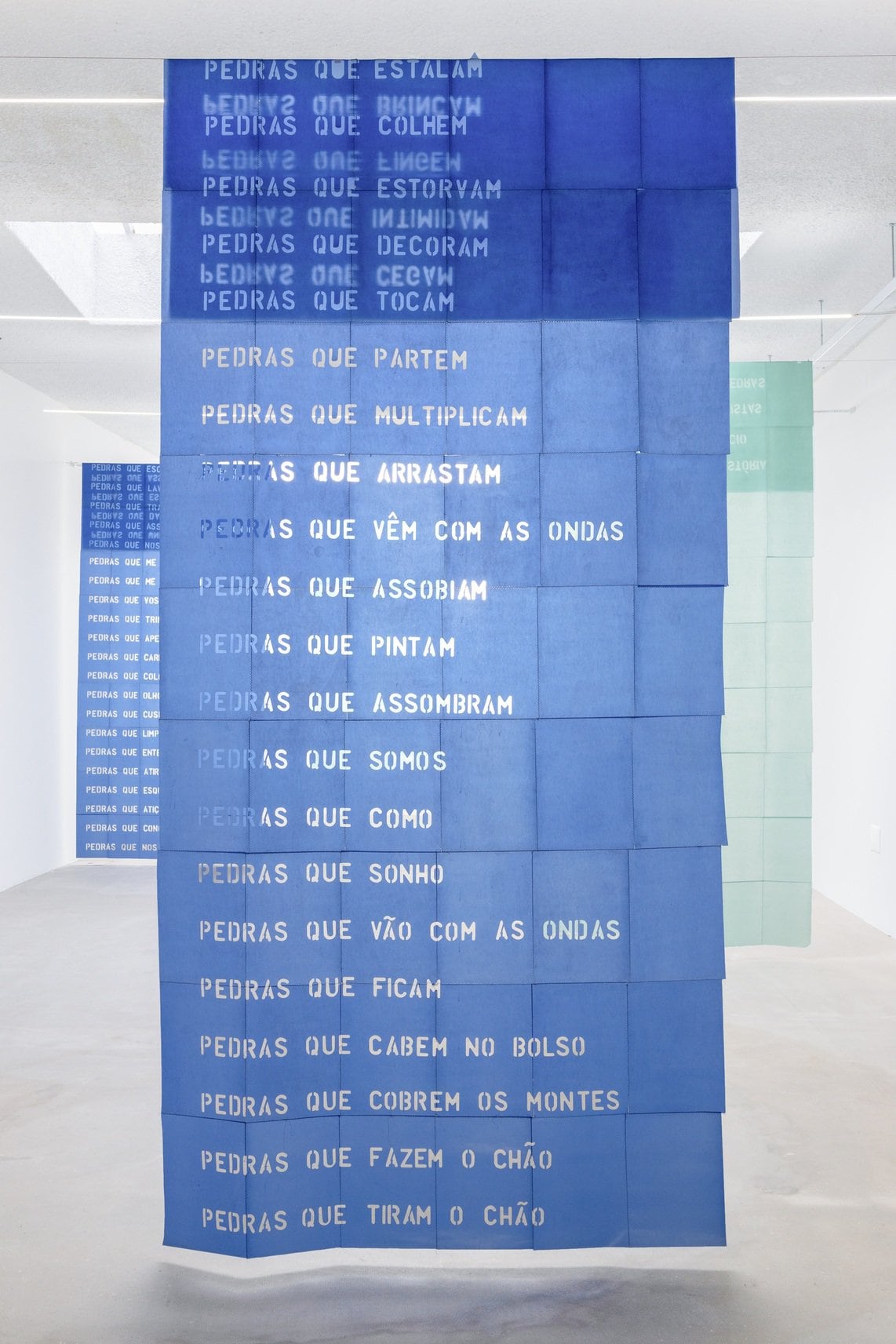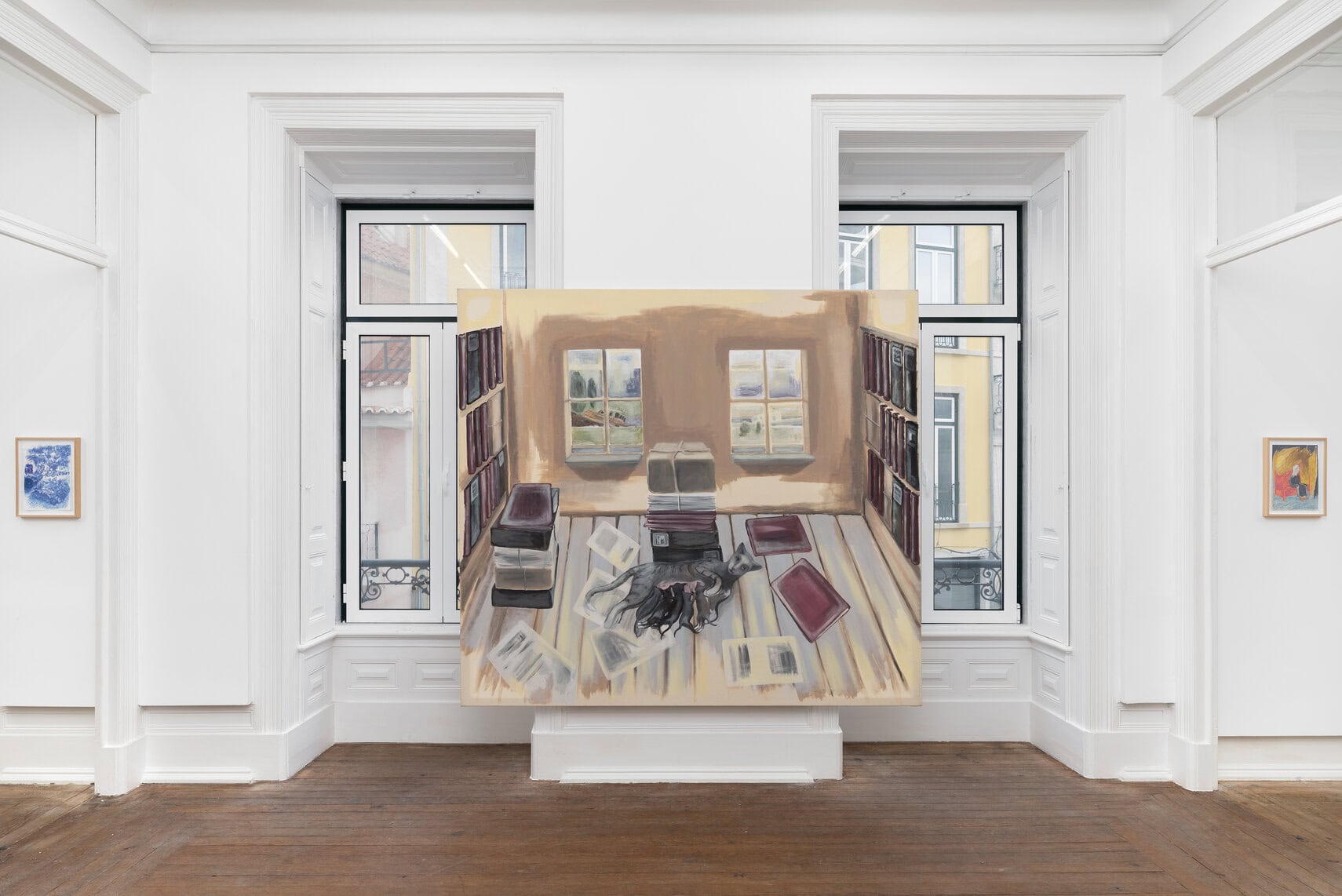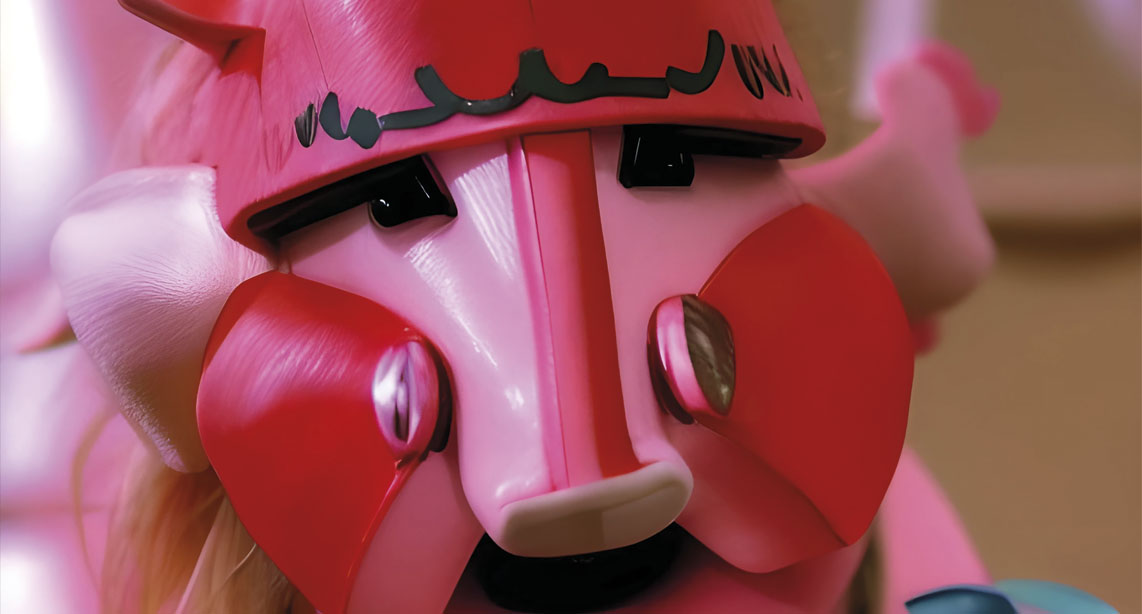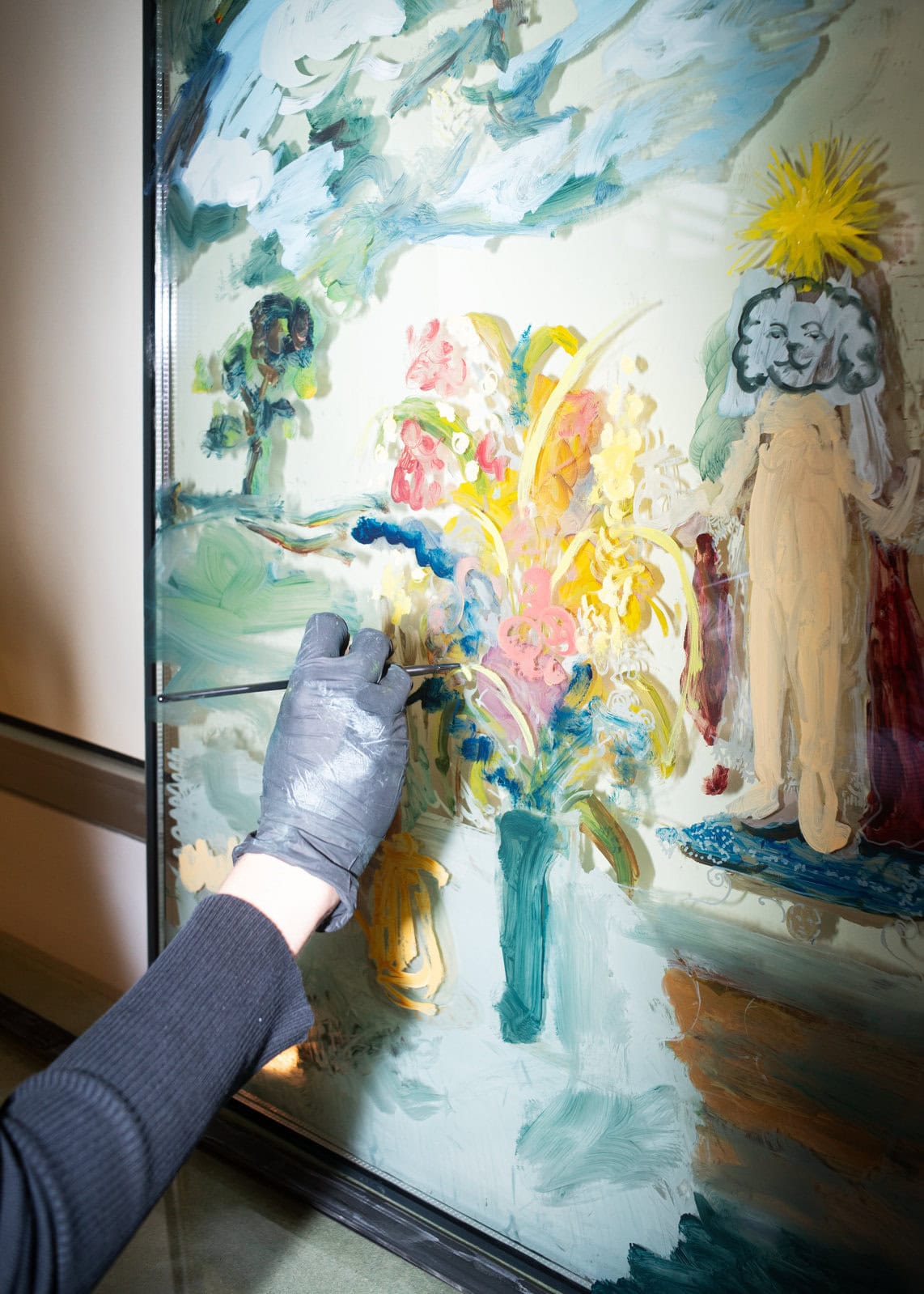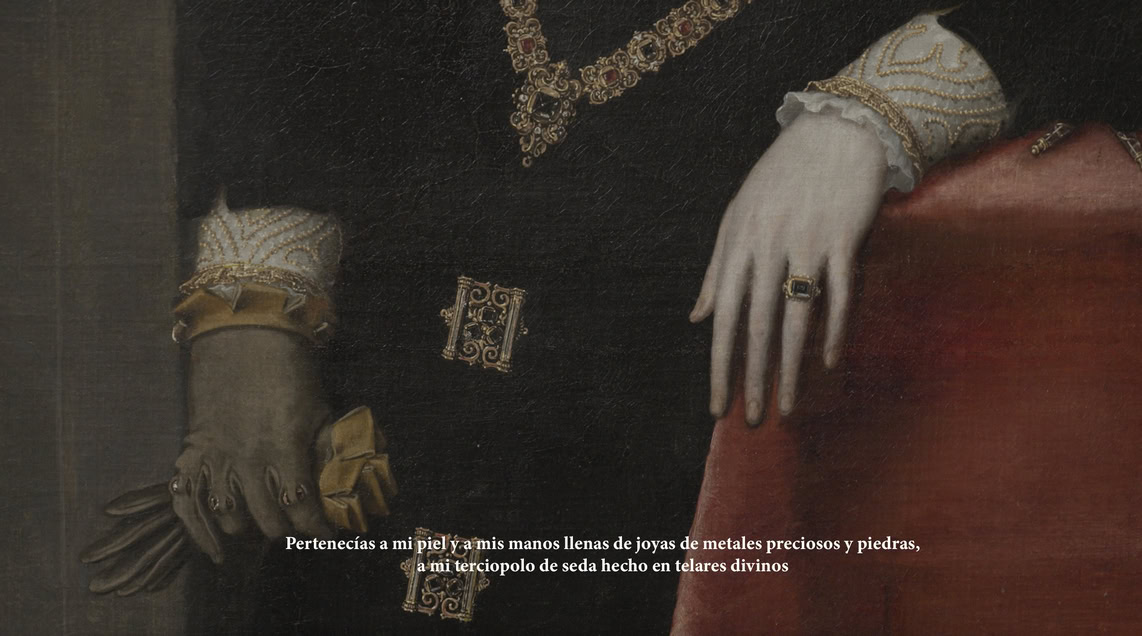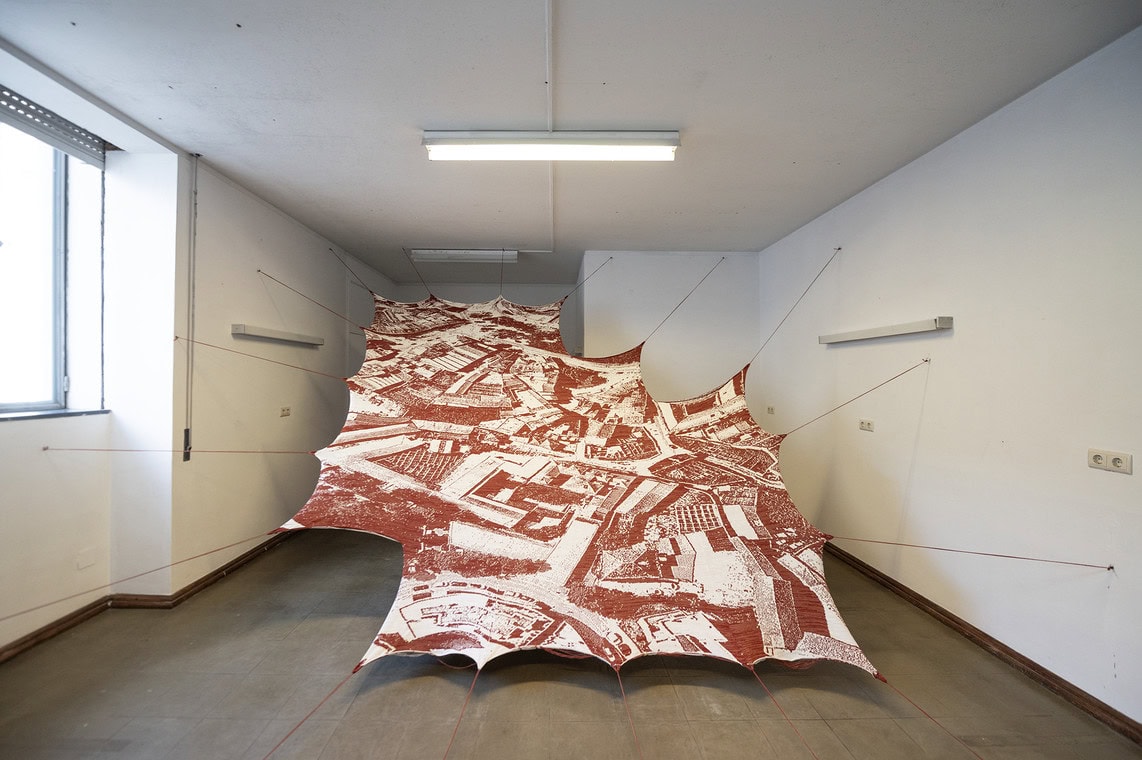Studio and factory came together, and paint, disposable materials and other industrial leftovers merged to provide the creative material. It may appear that between the two realities, originality and resourcefulness, are several steps apart, but this year there was evidence of their kinship. Sofia Mascate, the artist recently shortlisted for the artistic residency No Entulho, organised by UmbigoLAB and ArtWorks, was out to break down assumptions and forge collaborative bridges. In the aftermath of this experience, the artist chatted to Umbigo to reveal a bit about the end result, the process and her references; she also discussed her book Tactical Retraction (2022), a series of essays on still life painting, published by Materialverlag-HFBK, and two of her latest solo exhibitions – Gilded Cage, at New Jörg, Vienna (2024) and Pick Me, at BPA Space, Cologne (2022).
Mafalda Ruão: You are the most recent artist to be chosen for the artistic residency run by UmbigoLAB and ArtWorks No Entulho. What appealed to you about this proposal?
Sofia Mascate: It came about at a time when I was facing the limitations of my studio work. I had started painting on glass and was keen to increase its scale and develop the complexity of the pieces, but I lacked the resources to do it on my own. With its ethos of reusing surplus industrial materials, the No Entulho residency was the perfect solution to this problem.
While I was there, I was given a giant stockpile of unused glass, double-glazed windows and frames. Having access to these materials was not the only aspect that interested me. The factory provides its workshops and team to support the project, from the technical drawings to the post-production of the pieces. A working method very different from my own, as a multi-tasking painter. Painting is a labour-intensive process, fraught with unforeseen events, which requires time, focus and attention, and is also a lonely process. The production strategy in the factory is more collaborative, with careful and rigorous planning. I learnt to use other approaches and integrate different approaches into the studio.
MR: Your application was notable for its study of the expanded field of painting and the work of Josefa d’Óbidos, a Baroque artist primarily recognised for her religious-themed pieces and still lifes. To associate this reference with rubble as a creative raw material strikes me as an interesting way forward. Can you explore the concept that motivated you and the connection to this artist and her era?
SM: My fondness for Baroque still life painting flourished while I was writing my MA thesis Tactical Retraction, centred on this typology. It was divided into five essays, each analysing a different manifestation of still life painting. These essays were brought together by an examination of the systematic stance in art history that sidelined this genre, a tendency that continues in contemporary cultural critique. My intention was to explore the discursive possibilities of this genre of painting, which have been ignored, to encourage a new interpretation of art history.
I penned one of the essays on Josefa de Óbidos, whose work is hardly recognised internationally. Her still lifes emerge in the Iberian context of the bodegón, and, when compared to other masters of that period, like Juan Sánchez Cotán or Francisco de Zurbarán, they are barely touched upon within the genre. Moreover, several Portuguese reviewers have often referred to her work as ‘pinturinhas’ (tiny paintings), with diminutive implications related to the feminine and her status as an ‘Emancipated Maiden’, unwed and independent of her family. Her work is a major reference for me, which is why I wanted to work with her legacy and contribute to the discourse around her painting.
MR: We are talking about an artist who brings together a number of particularly important traits. She was alive at a time of significant limitations for the women’s movement and education; on the other hand, she was an example of emancipation. Do you feel that there are still many preconceptions and stereotypes to overcome when it comes to the role of women in art?
SM: Certainly. The very fact that Josefa de Óbidos’ work is deemed relevant in contemporary times because she is a woman, and not because of her own achievements, proves that her work is not viewed on an equal footing with other contemporary painters.
There is no need for anyone to discuss the masculinity of the iconic and canonical masters, or how this impacted on their relationship with painting. This lack of critical debate surrounding the work of some painters is precisely what motivated the Pick Me exhibition project at BPA Space in 2022, focusing on Infanta Margarita Teresa in the work of Diego Velázquez. This project looked at the painter’s efforts behind the machinations of the Habsburg monarchy, and how his painting shaped the Infanta’s life. The painter’s child portraits depicted Margarita Teresa being betrothed to her uncle Emperor Leopold I – a stark example of the instrumentalization of her body and image for political purposes. This confrontation between the Infanta’s passive position and Velázquez’s political functions, as a court official with tasks beyond painting, is a poorly understood dynamic. The focus on these issues is perhaps a step towards reconsidering artistic practices in history and the present, by breaking down certain narratives and looking at overlooked perspectives.
MR: And how did these thoughts find their way into the final outcome of the residency?
SM: The works I did during the residency are based on the Vedute series (still life with landscape) painted by Josefa de Óbidos in 1668. This series consists of one painting for each month of the year, and is mostly hidden from view as it is in several private collections. I wanted to work with the mysterious nature of this series, and its visual layering of still life in the foreground, plus landscape in the background.
By painting on glass, I could explore a less frontal and linear painting process. By stacking several glass layers, I sought to achieve greater pictorial depth and play with the transparent aspect of the medium. By using the factory rubble to explore these new pictorial possibilities, I came up with different styles of glass work. One group of pieces is admittedly three-dimensional, with different paintings on the front and back. We developed structures for these items in order to display the painting in space, allowing the audience to see it from both sides. Another group of works are wall pieces, where I have painted on two glass layers, front and back. These are juxtaposed and displayed on the wall, with a two-dimensional visualisation.
I also made a three-layer acrylic painting, which was framed in iron with a waterjet cut. The frame design is based on a painting by Josefa de Óbidos. The cut left rust on its surface, adding a floral decoration and the inscription ‘Donzela Emancipada’.
MR: Taking inspiration from ‘Donzela Emancipada’ and the previous reference to Velásquez, I again want to draw on your need to critically ponder the role of the painter in the past and the present. Now, let’s take a look at one of your recent exhibitions, Gilded Cage, comprising a series of paintings that draw on your own personal history and experience for a wider reflection from the Golden Age to the present day. What can you share about it?
SM: The body of work for this exhibition was made while I was living in a studio-house in Vienna, part of a scholarship for my final year of my MA in Critical Studies at the Akademie der bildenden Künste in Vienna. I lived for one year in a building dating back to 1788 called Haus zum Reichsapfel, meaning ‘house of the imperial globe’.
Its owners – my patrons during this period – manage a private investment company. In such caricature-like circumstances, the interior of this house, with its opulent and distinctively Christian and imperial décor, matched the issues I struggle with in my artistic practice.
Back then, in preparation for my second MA thesis, I was reading quite a lot about Diego Velázquez and Nicolas Poussin and their experiences painting for their respective courts. Velázquez was an outstanding court painter who raised his status through technical expertise, but who hardly painted at all given his responsibilities at the royal court. On the other hand, Poussin was a Bourbon court painter for Louis XIII for two years, until he relinquished the position to prioritise his artistic autonomy, live in Rome, and paint away from the orders of the French royal mandate – yet, as a painter, he had to meet the demands of his French collectors for the rest of his life to support his practice. This thesis surveyed the notion of artistic autonomy in the past and present, centred on two prime examples from the seventeenth century and, ironically, my own personal circumstances.
The struggle of artistic subordination when faced with financial needs is a reality for all artists. Whilst living and working in sponsorship circumstances, I was confronted with this reality on a material level. The paintings on show at Gilded Cage are part of this reflection, and include numerous references to my MA thesis and the works of Poussin and Velázquez, while being directly influenced by the place where they were made.
MR: And where do you go from here?
SM: I will be exhibiting at Galeria Madragoa’s stand at ARCO Madrid and doing an intervention at Umbigo’s booth. There are also plans to present the work developed during the residency.
